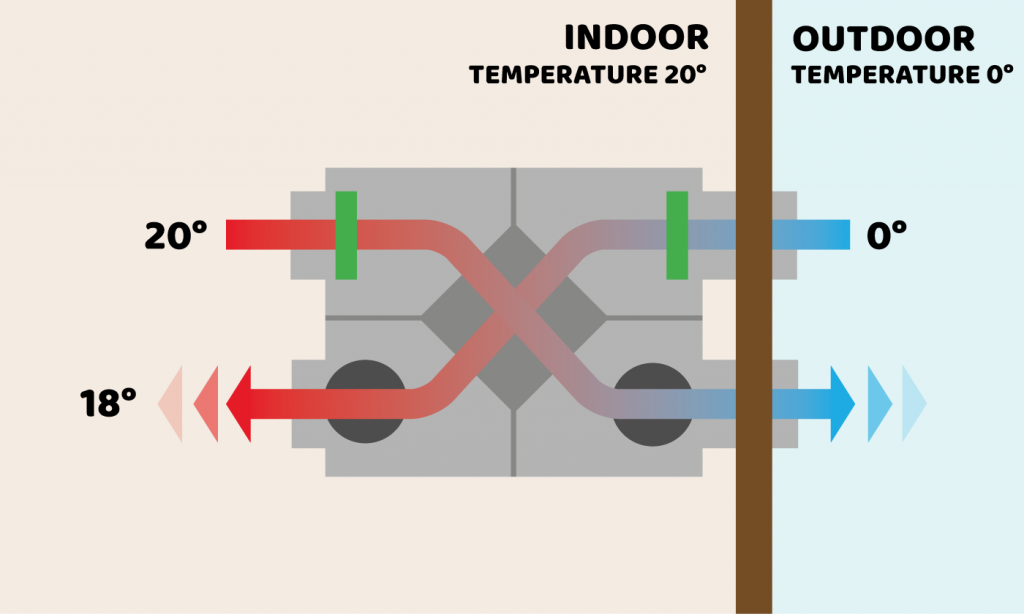How HRV Stabilizes Indoor Humidity
Exploring the Perks of Heat Recovery Ventilation for Power Efficiency in Residences
Heat Recovery Ventilation (HRV) systems offer homeowners a sensible method to boosting energy performance. By redeeming warm from outgoing air, these systems can significantly lower cooling and heating costs. Furthermore, they provide a stable supply of fresh air, enhancing interior air quality and convenience degrees. As house owners think about sustainable alternatives, comprehending the nuances of HRV systems comes to be progressively crucial. What variables should one assess before making such a financial investment?
Understanding Heat Recovery Ventilation Solutions

How HRV Improves Indoor Air Top Quality

Energy Savings: The Financial Advantages of HRV
Maximizing power performance, heat recovery ventilation (HRV) systems provide significant monetary benefits for property owners. By recuperating and reusing heat from exhaust air, HRVs significantly lower heating and air conditioning expenses. This technology can bring about energy savings of approximately 30%, depending on environment and usage patterns. Property owners frequently see reduced energy costs soon after setup, making HRVs a financially sensible investment over time. Furthermore, many regions offer incentives or rebates for energy-efficient upgrades, additionally enhancing the financial appeal. As energy costs remain to rise, the cost-effectiveness of HRVs ends up being increasingly clear. Generally, the unification of HRV systems not only advertises power efficiency yet additionally contributes to long-term financial cost savings for families.
The Environmental Influence of Heat Recovery Ventilation
A substantial environmental advantage of heat recovery ventilation (HRV) systems exists in their capacity to decrease general power consumption. By recovering warmth from exhaust air and transferring find this it to incoming fresh air, HRV systems lessen the need for energy-intensive heating and cooling down methods. This decrease in energy need adds to decrease greenhouse gas exhausts, as much less fossil gas is required to keep comfortable interior temperatures. In addition, HRV systems improve indoor air top quality by efficiently exchanging stagnant air with fresh outside air, decreasing dependence on mechanical air conditioning systems that can harm the atmosphere. On the whole, the implementation of HRV systems supports lasting living techniques and straightens with international initiatives to fight climate modification by advertising power performance in property setups.
Choosing the Right HRV System for Your Home
How can home owners guarantee they pick the right heat recovery ventilation (HRV) system for their requirements? First, they need to examine their home's dimension and format, as these aspects affect airflow demands. Next, examining the system's efficiency scores is important, as greater scores show far better efficiency and energy savings. House owners ought to also consider installment and upkeep expenses, comparing different brands and models for worth. In addition, it's vital to assess sound degrees, as some systems run even more silently than others. Consulting with a/c link experts can offer tailored referrals based upon certain home problems. Finally, examining user testimonials and service warranties can help in making an educated choice, making sure that the chosen HRV system effectively boosts indoor air quality and energy efficiency.
Often Asked Inquiries

Exactly how Commonly Should I Clean or Keep My HRV System?
The regularity of cleansing or maintaining a warm healing air flow (HRV) system normally relies on use and environmental elements. Usually, it is advisable to do maintenance every click here for more six months to ensure peak efficiency and air quality.

Can HRV Systems Help In Reducing Humidity Levels Indoors?
HRV systems can successfully lower interior humidity levels by trading stagnant, moist air with fresh, drier air from outside. HRV Heat Recovery Ventilation. This process aids maintain a well balanced interior environment, enhancing comfort and protecting against moisture-related issues
What Is the Life-span of a Common HRV System?
The life-span of a regular heat recovery ventilation (HRV) system differs, typically lasting in between 10 to 15 years. Regular maintenance can prolong its performance and functional life, making sure peak efficiency throughout its use duration.
Are There Any Type Of Sound Worry About HRV Equipments?
Sound issues with HRV systems can arise, especially from fan procedure. Numerous contemporary systems are made to decrease audio degrees, ensuring they operate silently while maintaining effectiveness, which deals with potential disturbances in living settings.
Can I Mount an HRV System Myself, or Do I Required a Professional?
The specific contemplated whether to mount the heat recovery ventilation (HRV) system personally or hire an expert. Typically, while do it yourself setup is feasible, proficiency warranties appropriate performance and conformity with local structure codes, improving system performance.